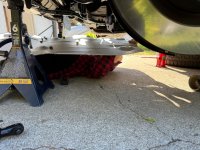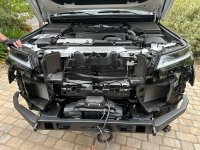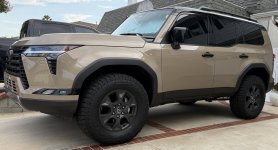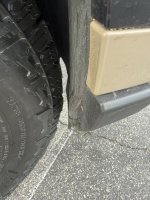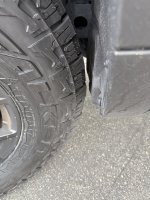I just did the install over the weekend and can share a few tips.
For the front, the electric connection to the shock is at the top and shielded in a plastic cover that must be pried open to unseat the shock pigtail. I removed the sway bar completely, and the eKDSS will expand out two "piston" mounts. You can then remount the end links, the two eKDSS mounts but the center mount will be too low to bolt in because the eKDSS is expanded. I just put two jack stands under the sway bar and with a floor jack let the vehicle weight slowly compress them back.
The rear is simpler since the shocks stay in and the electric connection is at the bottom - no need to touch. I disconnected the sway bar one side at a time, only the driver side has the eKDSS piston. Again, I used the vehicle weight to push back in. I also had to use a bar clamp to pull the sway bar towards the axle.
My observations on the springs is a little different. The fronts are about 1in longer, I think maybe one more turn. The rears are about the same height, same amount of turns but the coil spacing is different. I assume it's a stiffer spring since it's sitting higher now.
For the front, the electric connection to the shock is at the top and shielded in a plastic cover that must be pried open to unseat the shock pigtail. I removed the sway bar completely, and the eKDSS will expand out two "piston" mounts. You can then remount the end links, the two eKDSS mounts but the center mount will be too low to bolt in because the eKDSS is expanded. I just put two jack stands under the sway bar and with a floor jack let the vehicle weight slowly compress them back.
The rear is simpler since the shocks stay in and the electric connection is at the bottom - no need to touch. I disconnected the sway bar one side at a time, only the driver side has the eKDSS piston. Again, I used the vehicle weight to push back in. I also had to use a bar clamp to pull the sway bar towards the axle.
My observations on the springs is a little different. The fronts are about 1in longer, I think maybe one more turn. The rears are about the same height, same amount of turns but the coil spacing is different. I assume it's a stiffer spring since it's sitting higher now.
